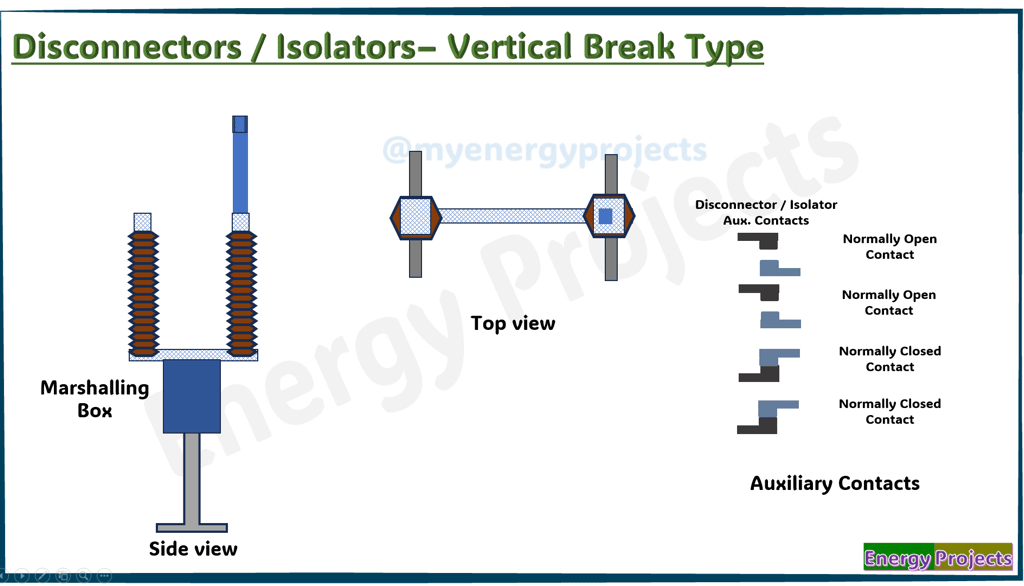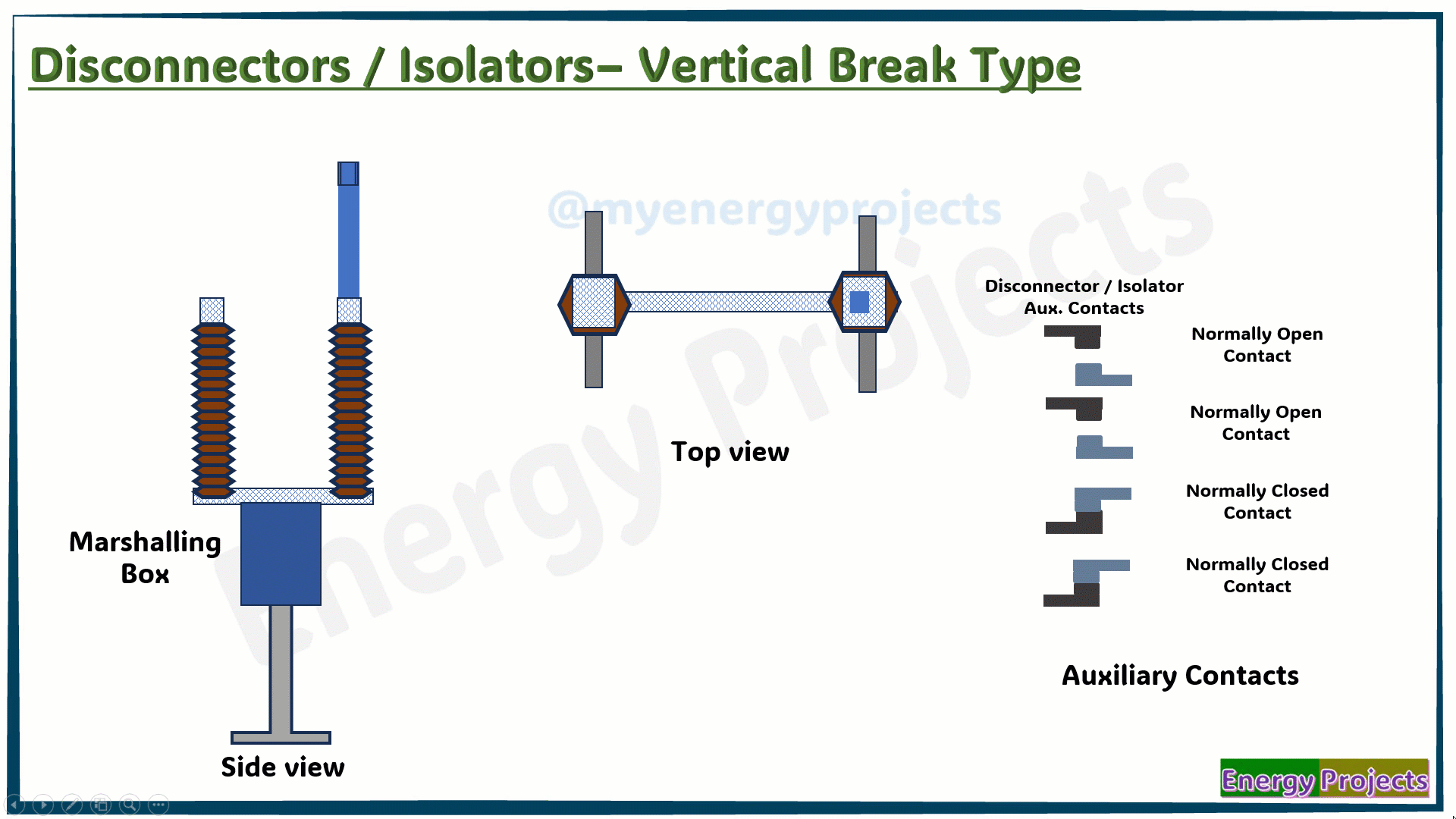03.Vertical Break type Disconnectors
Track Sequence of Engineering
A Vertical Break-Type Disconnector is a type of isolator used in high-voltage electrical systems that interrupts the circuit by moving the contact arm vertically. It features a movable blade that pivots upward or downward to disengage from a fixed contact, providing a clear visual break for enhanced safety. This configuration ensures dependable isolation, particularly in substations with limited horizontal space. Its vertical movement allows for compact design while maintaining safe phase-to-phase and phase-to-ground clearances. These disconnectors are commonly used where space optimization and operational reliability are essential. Operation can be manual or motor-driven depending on system requirements.
Advantages
Provides a clear vertical isolation gap for enhanced safety and visibility.
Occupies less horizontal space, making it ideal for compact substation layouts.
The simple pivot mechanism allows reliable operation with minimal moving parts.
Suitable for high-voltage outdoor installations due to good phase-to-phase clearance.
Disadvantages
Requires adequate vertical clearance, which may be a limitation in low-profile substations.
May be more exposed to environmental factors, affecting long-term performance.
Installation and alignment of vertical movement components demand precision.
Must be operated only when the circuit is fully de-energized, as it cannot interrupt load or fault current.
Operation:
The vertical break disconnector operates by pivoting a contact arm upward or downward to break the circuit at a fixed point. It must be operated only when the circuit is de-energized to ensure safe isolation. Please note that the disconnector moves in the vertical direction during operation.
Auxiliary Contacts :
Auxiliary contacts are secondary switching contacts used in conjunction with primary switching devices like disconnectors or circuit breakers. They provide status signals (open or closed) to control systems or indicator panels. These contacts do not carry load current but help in automation and monitoring. They are essential for interlocking, safety logic, and remote supervision. The number of NC, NO , NOC ,NCO depends based on the specific requiremnets. You can see the operation of the Auxiliary contacts .




